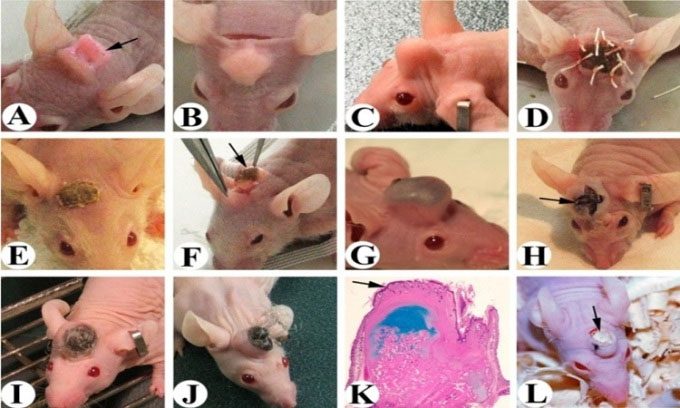The experiment that created antlered mice may pave the way for new methods in bone wound care and even limb regeneration.

The process of antler growth in mice in a similar study published in 2020. (Photo: C. Li / J Regen Biol Med)
Deer antlers are among the fastest-growing appendages in the animal kingdom. Growing at a rate of up to 2 cm per day during the spring growth cycle, deer antlers can fully develop within a matter of months. Scientists at Northwestern Polytechnical University in Xi’an, China, sought to harness the rapid growth rate of antler tissue by grafting stem cells from Sika deer antlers onto the heads of laboratory mice. Their experiment resulted in mice with small antlers on their heads. According to a study published in the journal Nature, the findings could help treat bone wounds and promote limb regrowth in the future, as reported by Popsci on March 11.
The research team began by examining the cellular composition and gene expression of antler tissue at various developmental stages. After isolating the stem cells with the greatest regenerative potential, they began adding these cells to the heads of the test mice. They found that the most effective cells for grafting were those taken from antlers that had shed no more than five days prior. The cells were collected from the antler stalk (where the antler base connects to the skull), cultured in petri dishes, and then implanted between the ears of hairless mice. Within 45 days after the grafting, the mice began to develop structures resembling antlers.
This is not the first time Chinese scientists have created antlers on mice. In a similar study published in the journal Regenerative Biology and Medicine in August 2020, the research team surgically extracted antler tissue from living deer, then used a freezing agent to treat the material before implanting it into hairless mice. That research also resulted in mice with antler bumps on their heads.
With the identification of these new types of stem cells, the research team hopes to expand their applications in modern medicine, such as in treating bone wounds or regenerating limbs.


















































